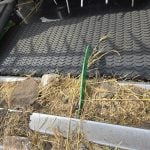Higher pulse prices likely
Several developments are changing the outlook for pulse crop markets in 1999-2000.
Drought is affecting a large part of the Middle East, from Syria and Jordan on the Mediterranean to Iraq in the east, where a United Nations report says the worst drought on record has cut crop yields to half of last year’s total.
Turkey is also in the region, but appears to have escaped the worst of the drought.
Syria and Turkey are major pulse crop exporters and worries about their ability to supply product through the year has caused Indian buyers to scoop up supplies elsewhere. This caused the recent bounce in red lentil prices.
Read Also

China’s grain imports have slumped big-time
China purchased just over 20 million tonnes of wheat, corn, barley and sorghum last year, that is well below the 60 million tonnes purchased in 2021-22.
While Turkey lentil exports are forecast to be the same as last year, chickpea exports will fall to 150,000 tonnes, down from 200,000 tonnes in recent years. With production catastrophes elsewhere in the Middle East, Turkey’s pulse supplies will likely be tied up there, causing India and Pakistan to continue to look to Canada and other exporters.
There are also growing problems in other parts of the world.
Mexico last week declared as an official drought disaster zone a huge swath of territory from its Pacific to Atlantic coast, including every state but two along the 3,200-kilometre border with the United States. In some areas the drought is entering its fifth year, and officials say one third of the entire country is affected.
Mexico consumes large quantities of beans. The drought’s effects on bean production are unclear but one would assume there will be a need for more imports.
Australian farmers are trying to boost pulse crop production for the same reasons Canadian farmers are, but they are working with weaker crop varieties.
Last year’s crop was severely infected with ascochyta and it looks like the disease will be a problem again this year.
Also, some areas of Australia are quite dry and seeding has been delayed in the hope of rain. But given their long maturation, some pulses have been sown into dry soil in the hope that rain will follow.
The situation on the Canadian Prairies is the opposite, with too much moisture. Several analysts are suggesting the predicted big jump in chickpea acreage will be reduced because producers had to turn to shorter-season crops.
All these factors should improve the supply-demand fundamentals in the pulse market, and, we hope, raise prices a little.














